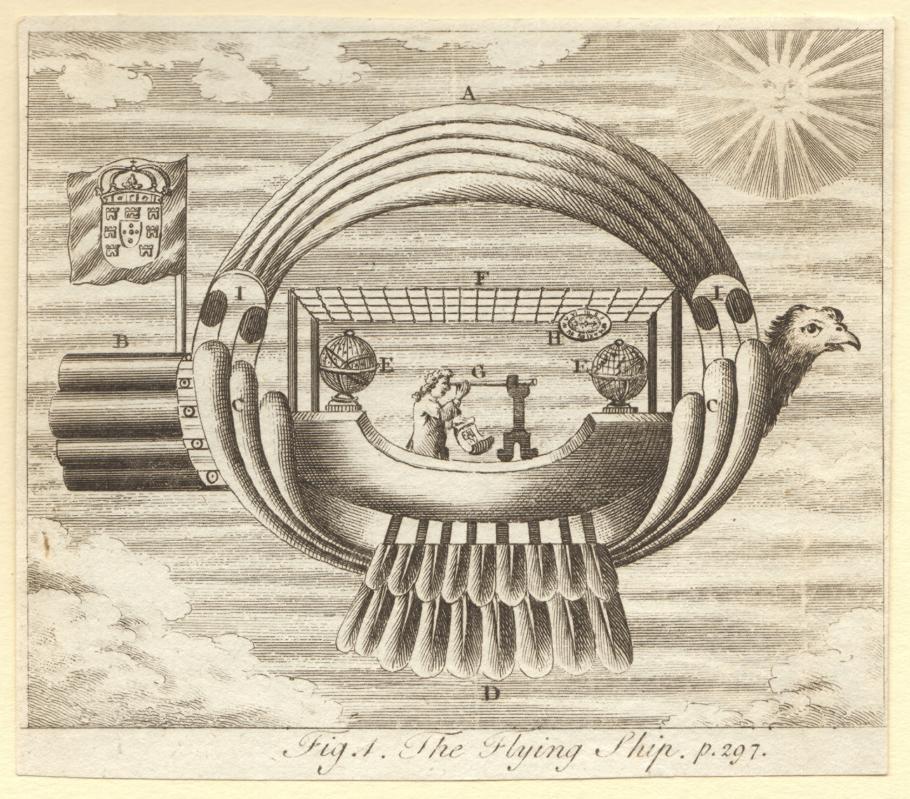

Launching the Balloon Era
Jan 06, 2017
By Tom Crouch
The balloon was a product of the scientific revolution of the 17th and 18th centuries. Early modern experimenters like the Englishman Robert Boyle, studied the physics of the atmosphere. By the 18th century the focus shifted to the discovery of the constituent gases that make up the atmosphere. Early plans for flying machines inspired by the new discoveries were impractical, but quickly gave way to the first real balloons.
This is a fanciful flying ship proposed by the Brazilian Jesuit Bartolomeu de Gusmão (1685–1724). Gusmão is said to have flown a small balloon before the Portuguese court in Lisbon’s Casa da India on August 8, 1709. Etching from a publication, English, 18th century
Humankind first took to the sky using the principle of buoyancy. As the Greek philosopher Archimedes explained, when an object weighs less than the amount of fluid it displaces, it will rise until it reaches an equilibrium point. A balloon can become buoyant when filled with hot air or a gas that is lighter than air, such as hydrogen. While small hot air balloons were flown centuries ago in Asia, and a small balloon may have been flown in Lisbon as early as 1704, the first people did not venture aloft until the fall and winter of 1783.
The brothers Joseph-Michel Montgolfier (1740–1810) and Jacques-Étienne Montgolfier (1745–1799), papermakers from Annonay, France, launched the era of spectacular hot air balloon flights. On June 4, 1783, the Montgolfier’s sent a small hot air balloon aloft from the public square of their hometown of Annonay, France. News of the flight spread slowly across France, generating curiosity and excitement.
Inspired by reports of the Montgolfier flight, Parisians commissioned chemical experimenter Jacques Alexandre César Charles (1746–1823) to provide a balloon demonstration for the capital. Charles filled his balloon with the lightweight hydrogen, rather than hot air. He sent his first small gas balloon aloft from the Champ de Mars on August 27, 1783. In the below hand-colored etching you can see a chest in the foreground. The chest contained dilute sulfuric acid and metal filings used to generate hydrogen to fill the balloon.
Charles’ balloon landed in the village of Gonesse that afternoon, some 16 kilometers (10 miles) from the launch point. It was attacked by local peasants who assumed it was a demon that had fallen from the sky.
Related Topics
You may also like

We rely on the generous support of donors, sponsors, members, and other benefactors to share the history and impact of aviation and spaceflight, educate the public, and inspire future generations. With your help, we can continue to preserve and safeguard the world’s most comprehensive collection of artifacts representing the great achievements of flight and space exploration.
